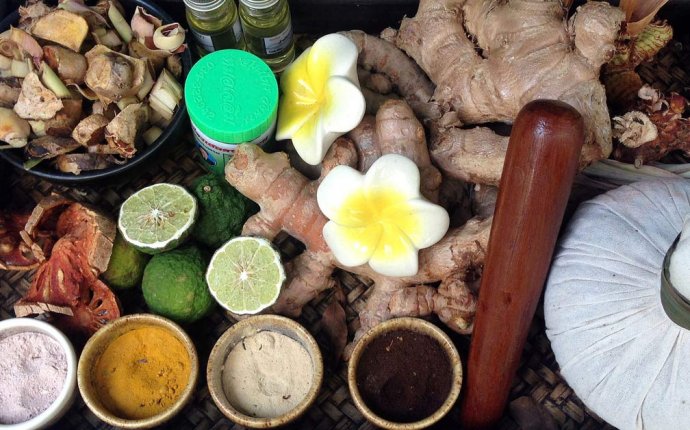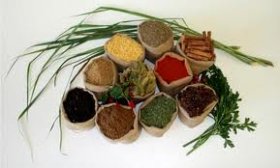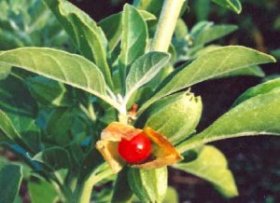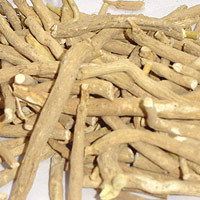
Ayurvedic Medicine Herbs
 With the growing popularity of Ayurveda, an increasing number of Americans are discovering the health benefits of the herbs that play essential roles in this millennia-old system of healing.
With the growing popularity of Ayurveda, an increasing number of Americans are discovering the health benefits of the herbs that play essential roles in this millennia-old system of healing.
It is impossible to even scratch the surface of this venerable medical tradition in a brief article like this, but it is within our reach to offer a respectful nod to the enormous pharmacopeia of Ayurvedic herbs, and to explore a few of the more well-known ones that are finding their way into American medicine cabinets.
As we in the Western world develop our own “science of longevity” based in the undeniable strengths of modern research methodology, it makes sense to take a serious scientific look at botanical medicines already known to be efficacious through thousands of years of practice. Ayurveda provides much wise counsel on, “how life works best” (Read Ayurveda in America: How India’s Ancient Health Sciences Can Heal American Medicine from our Spring 2011 edition.)
There’s an idea in Ayurveda that, “What heals, also prevents.” Herbs effective in treating specific conditions can also serve as a “food, ” providing targeted nourishment to specific physiological systems and processes. For example, Turmeric (Curcuma longa), popularized for its anti-inflammatory properties, can also be eaten as a culinary spice by people looking to proactively prevent disease and maintain good health. That’s not the case with allopathic pharmaceuticals!
Another key Ayurvedic idea is that there is synergy in nature. This is important to keep in mind as we isolate and study the specific constituent compounds in herbs. While it is useful to understand the properties of individual plants, be aware that herbs typically have multiple rather than single effects. In Ayurveda, as in other systems of Asian medicine, herbs are seldom used in isolation. Rather, they’re combined in standardized but individualizable formulas designed to balance and harmonize the properties of the constituent herbs.
Ayurvedic herbs are used for many reasons: to maintain overall health; to boost immunity; support mental clarity and focus; to calm the nerves; to improve digestion; to protect the body from toxins and support the detoxification process; and to support innate healing processes.
 The following six herbs have long histories of traditional use in Ayurveda, and they are increasingly popular with American consumers:
The following six herbs have long histories of traditional use in Ayurveda, and they are increasingly popular with American consumers:
ASHWAGANDHA (Withania somnifera): The name of this shrub roughly translates as, “Strength of a horse.” It’s roots have been medicinally used for thousands of years. In classical Ayurveda, the described properties of Ashwagandha include: Medhya (promotes intellect and cognitive development), Balya (increases strength and recovery), Rasayana (rejuvenator or life-extending substance) and Nidrajanana (promoter of sleep).
Today, Ashwagandha is best known for it’s ability to promote energy and stamina without stimulating the heart. As a body-balancing herb, it also addresses insomnia.
Preliminary research suggests Ashwagandha may suppress stress-induced changes of dopamine receptors in the corpus striatum, which may play a role in the development of chronic anxious behaviors (Upton R, ed: Amer Herbal Pharmacopoeia 2000:1-25.).
Ashwagandha may also have a GABA (gamma-aminobutyric acid) mimetic action, which could account for some of its sedating and anticonvulsive properties. This would be in accord with its historical use for insomnia and anxious neurosis (.)
Ashwagandha has also been shown to increase production of thyroid hormones T4 and T3 while simultaneously increasing hepatic glucose-6-phosphatase activity and reducing hepatic lipid peroxidation in animal models (Panda S, Kar A. J Pharm Pharmacol. 1998 Sep;50(9):1065-8). As we learn more about the co-morbidities between hypothyroidism, hypercholesterolemia and diabetes, Ashwagandha may one day play an important role in the management of these inter-related conditions.
 Most commonly, Ashwagandha is dispensed in doses of 500 mg once or twice daily, before meals. Maximal responses are generally seen within 2-4 weeks of regular use.
Most commonly, Ashwagandha is dispensed in doses of 500 mg once or twice daily, before meals. Maximal responses are generally seen within 2-4 weeks of regular use.
BITTER MELON (Momordica charantia): This edible gourd should be every physician’s “go-to” plant for the 16 million or more Americans with high-normal glucose readings or ‘boderline diabetic/metabolic syndrome patients.
Preliminary evidence suggests bitter melon’s hypoglycemic action can be explained through several independent mechanisms: for one, it has been shown to increase peripheral glucose oxidation as well as glucose tolerance and insulin signaling in induced insulin resistance models. It also decreases hepatic gluconeogenesis, while increasing glycogen synthesis.
Bitter Melon increases insulin output from the pancreas, and it also provides a unique compound called polypeptide-P, which is an insulin mimetic with a similar structure to bovine insulin (Krawinkel MB, Keding GB. Nutr Rev. 2006;64(7 Pt 1):331-7).
Compounds produced by this intriguing gourd have been shown to reduce triglyceride levels in a dose-dependent manner in animal trials (Jayasooriya AP, et al. J Ethnopharmacol. 2000;72:331-6). Though we don’t yet have human data corroborating this effect, the animal studies suggest that bitter melon may have a role in reducing cardiovascular risk, particularly in people with diabetes or metabolic syndrome.
Bitter melon products are typically standardized to their constituents, momordicosides and charantin, and usually dispensed in 500-600 mg doses, twice daily, following meals. As it does have an insulin mimetic action, it may be necessary to adjust the dose of concurrently prescribed hypoglycemic drugs.
HOLY BASIL (Ocimum sanctum): Also known as Tulsi, this plant is actually considered sacred by many people in India. As such, it can be found growing in temple gardens, where the rich fragrance opens respiratory passages and some say, help the spirit soar.
Holy Basil’s key compounds, including eugenol and caryophyllene, are similar to those found in oregano (Origanum vulgare) and it shares the anti-inflammatory, antipyretic, and analgesic actions typical of the oregano family (Padalia RC, Verma RS. Nat Prod Res. 2011;25(6):569-75. Godhwani S, et al. J Ethnopharmacol. 1987;21:153-63).
This plant is also native to West Africa. In Sierra Leone, it is called ‘Fever Plant.’ The various fixed oil compounds found in the plant have shown extensive antimicrobial and antifungal activity against a variety of pathogens including Escherichia coli and Candida albicans. In classical Ayurveda, Holy Basil was used as an anti-tussive, to clear “excess dampness in the lungs.” Recent human trials have validated this, the data showing that this herb can increase lung capacity as well as reduce labored breathing.
It has also been shown to significantly reduce several measures of stress in generalized anxiety disorder (GAD) patients.
Holy basil can be taken in capsule, tea and in liquid forms. It is dispensed in 600-700 mg doses, twice daily, before meals. Allow 2-4 weeks for optimal results.
TURMERIC (Curcuma longa) is one of Ayurveda’s true treasures. Consumption of the bright yellow rhizomes of this plant was first advocated in millennia past by yogis who claimed it enhanced flexibility and joint integrity. In recent years, a vast amount of research has been done on Turmeric’s main components curcuminoids and curcumin. These compounds have been shown to provide many diverse benefits for human health, including preservation of brain function, high antioxidant activity, regulation of inflammation in conditions like rheumatoid arthritis, and cancer prevention.














